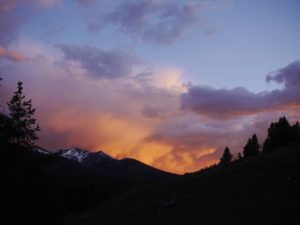
Throughout my life, I have experienced quite a lot of — and subsequently accrued — a plethora of trauma. Some of these traumas included: watching a man die at 13, growing up neurodivergent (in a household that greatly values traditional “intelligence”) that was met with verbal abuse, and being physically abused in relationships, just to name a few. To this end, whilst I have not experienced any traumatic events during this course, I have been provided with the space and clarity of mind to consciously contemplate and reflect on these experiences (more so than I have by myself and in therapy). Upon this reflection, and interaction with the course material (with particular reference to section 4 and Indigenous peoples history and knowledge) I can’t help but feel connections to these readings, feelings of trauma, and an understanding of the importance of healing. This is of course not to say that I have a full understanding of Indigenous experiences associated with this history, as I myself am not of Indigenous descent. However, I do believe that misery loves company, and that no matter how you get them, shared emotions will always be related.
To this end, I can relate (to some extent) to the pain of being violently removed from one’s home, as I too have been cast out and abused by people whom I have trusted. An experience which was discussed by Mark Spence (Crown of the continent, backbone of the world, 1996) concerning the Blackfeet tribe and the abuses that occurred to establish Glacier National Park. I can also relate to having my history drastically mislabeled, as seen with Indigenous peoples being the subject of unaddressed and unrecognized genocide. An issue discussed by Dunbar-Ortiz (Yes, Native Americans Were Victims of Genocide, 2016) and David Treuer (Return the National Parks to the Tribes, 2021) respectively. I too have experienced drastic changes in my relationships (both negatively and positively) over the years (such as with my parents) similar to that of the Confederated Salish and Kootenai Tribes (CSKT) and the Fish and Wildlife Service (FWS) with the Bison reserve.
And the list goes on. But what is important, as several Indigenous peoples we have talked to (such as Darrell Marks, Brian Upton, and Dylan DeRosier) have mentioned, is how we heal and how we hold others (and possibly ourselves) to a higher standard. It’s ultimately about growth, and I think that’s what it really means to be human.
As such, it seems important that I then express my humanity here. To this end, one way in which I have been able to heal on this course (aside from finding these associations through the course material) has been in my reconnection to nature and subsequently a piece of myself. Something that I have been fortunate enough to undergo whilst reading about the reconnection and revitalization of Indigenous peoples to their culture, such as with the CSKT Bison range and the #Landback movement. Honestly, I believe that in order to fully heal, one has to both grow in strength/empowerment, but also in vulnerability and recognition of truth. In that same vein, being able to discuss and open up with members and instructors of this course, as well as individual reflections, has actively been my striving towards this end. Additionally, these practices seem to me to be akin to the cultural and historical discussions and reflections being prompted and led by Indigenous peoples, such as Germaine White and her work. Ultimately, healing and growth are constant and continuous processes, of which I believe both myself and Indigenous peoples will undergo for the rest of our lives. But, whilst that does mean that we will have to continue to struggle with these experiences, it also means that we are given an opportunity for endless growth and strengthening. So, I believe that we will only continue to grow, and I for one can’t wait to see how we will continue to heal.